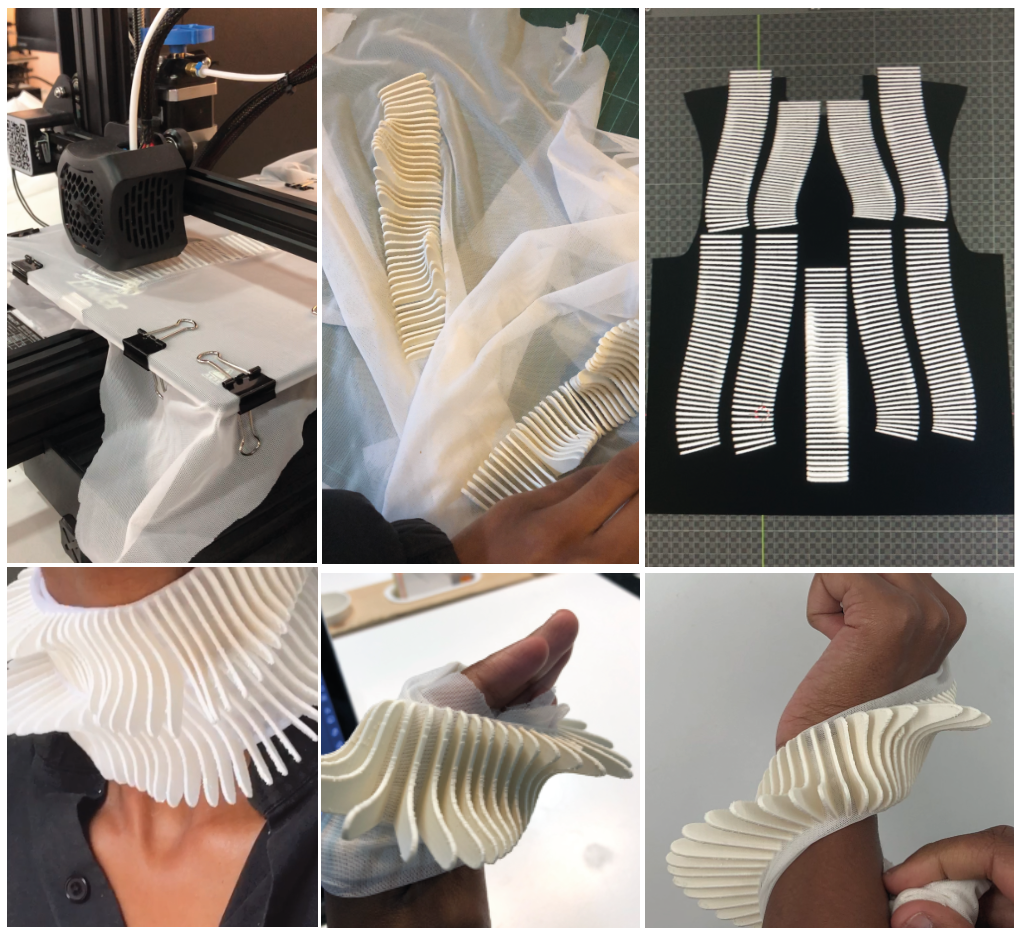7. Computational Couture¶
letsssssgoooooo
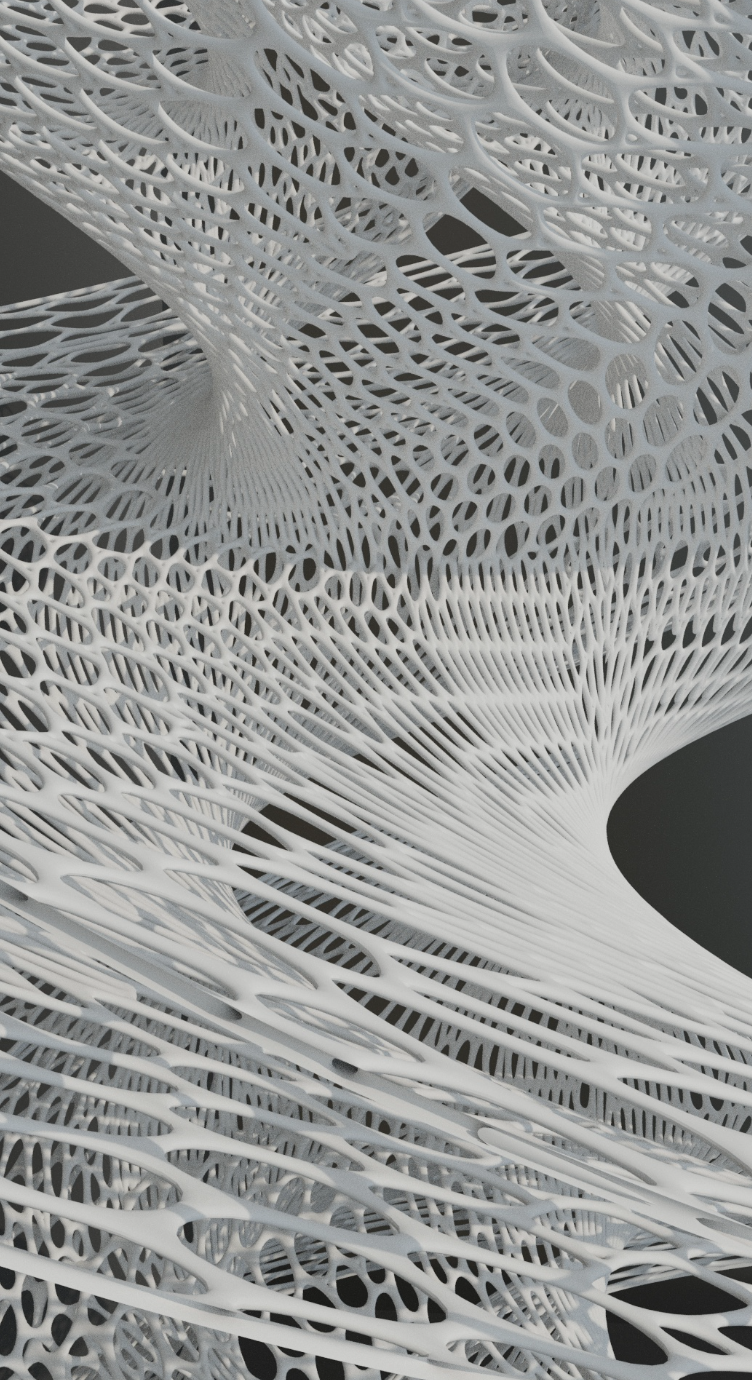
Alessandro Zomparelli
Tissue add-on for Blender is developed by Co-de-iT to promote the use of Blender in Computational Design¶
The add-on is composed by different tools for computational design.
- Tessellate tool allows the user to copy a selected object (Component) on the faces of the active object (Generator), adapting its bounding box to the shape of quad-faces. Once the Tessellate button was pressed, then more options will appear in the Operator parameters. Update allows you to update the active the Tessellated mesh according to Component and Generator changes. You can also change the parameters of tessellation.
- Colors-Weight Exchanger consists of two tool: Colors from Weight and Weight from Colors that allow the user to convert the active vertex color to vertex group and vice-versa
- Dual Mesh modify the selected meshes creating dual meshes. Dual Mesh output is a polygonal mesh derived from the triangular mesh. Quadrangolar meshes are automatically converted to triangular before.
TISSUE EXAMPLES¶
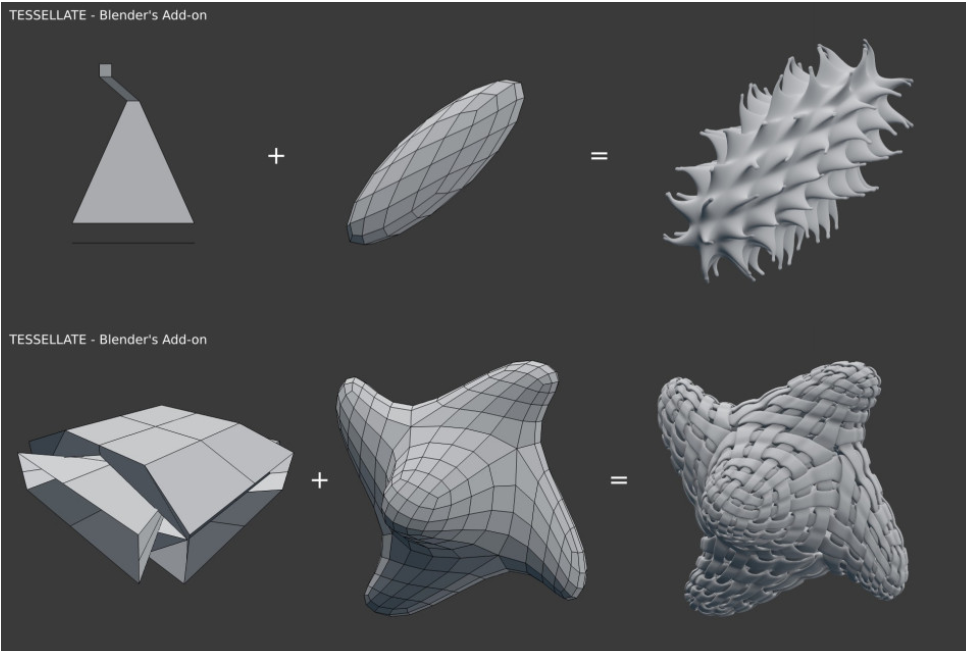
MY EXPERIMENTATION WITH THE ADD-ON¶

WHAT IS GENERATIVE DESIGN?¶
Generative design is an iterative design exploration process that uses an AI-driven software program to generate a range of design solutions that meet a set of constraints. Unlike traditional design, where the process begins with a model based on an engineer’s knowledge, generative design begins with design parameters and uses AI to generate the model.

Generative design is widely considered to be the next frontier in computer-aided design.¶
1 REFERENCES¶
THIS FITS ME PROJECT BY Leonie Tenth Of van Noorden¶
This Fits Me is a collaborative project that combines fashion with generative design, a technique most often used in architecture to make structures not static, but dynamic to adjust to the environment. Similarly, this digital process allows garments to adjust to the wearer. After a 3D body scan, the wearer’s precise measurements are applied to an algorithm, then the material can be laser cut & stitched for fitting
"In the future you will go into a store where you get a 3D body scan and start assembling and customising a unique garment for yourself," van Noorden says in the movie. "After a few days you'll get your unique design delivered at home."
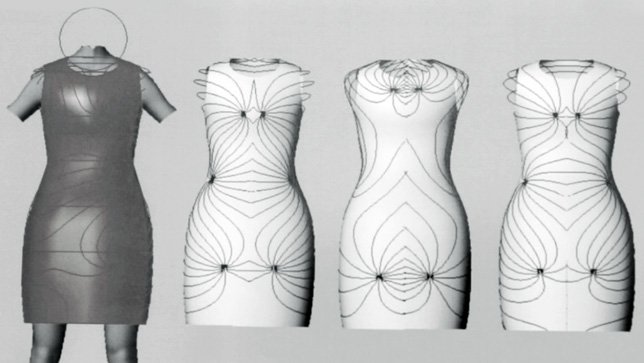
The generative pattern enables customers to customise the dress around the curves of their body, within the rules set by van Noorden. She then uses this personalised design to create the pattern pieces for the dress.


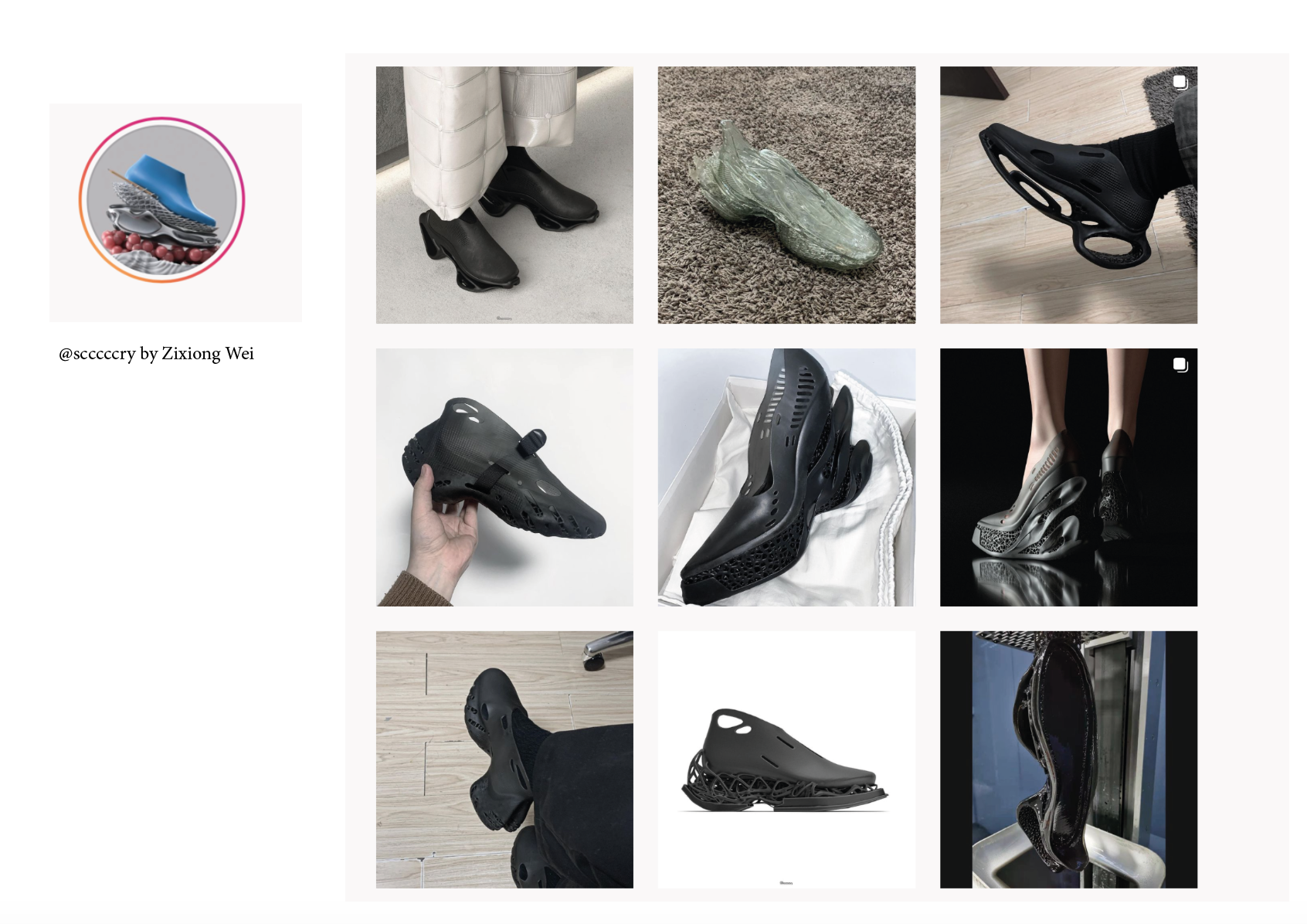
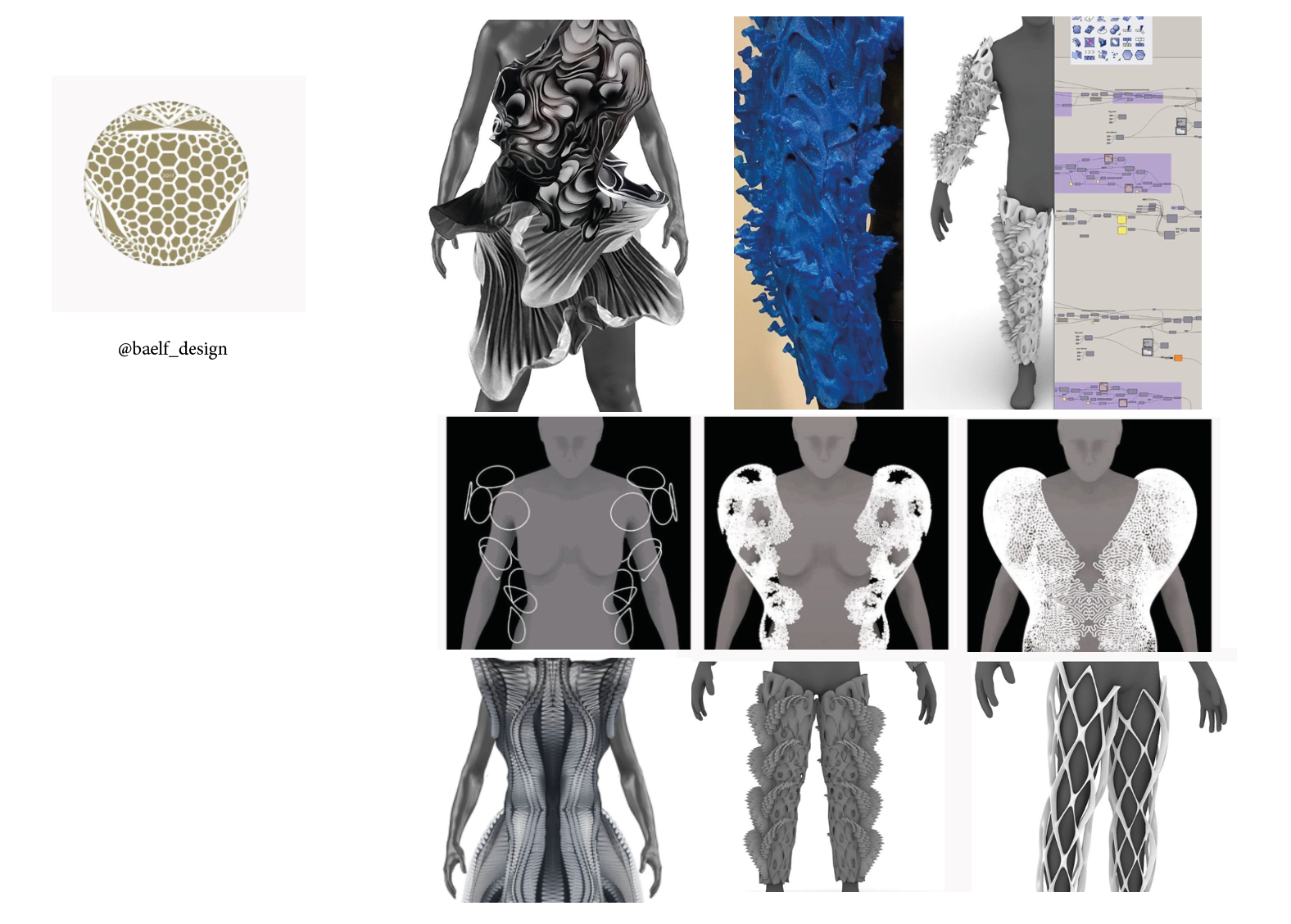
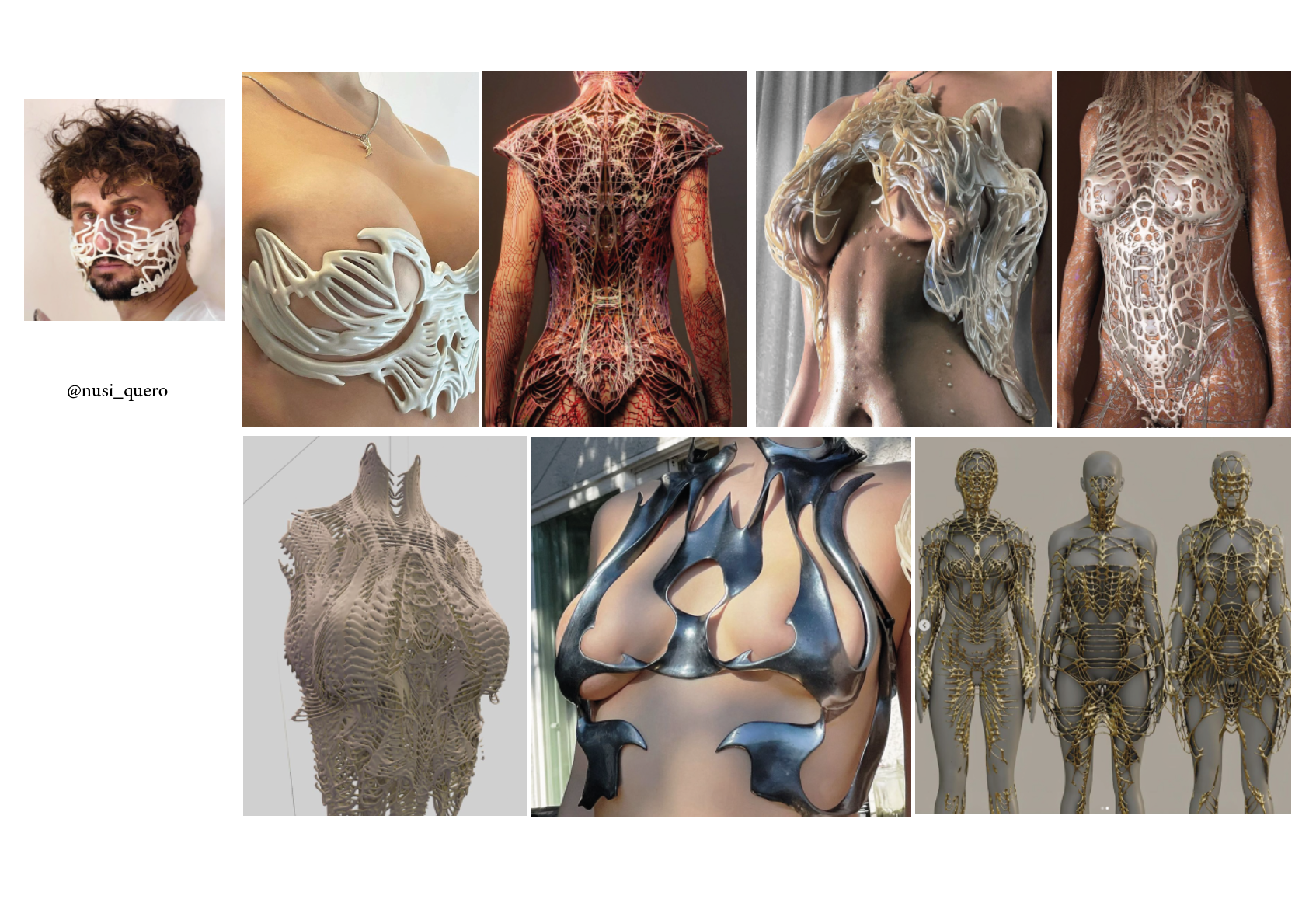
PARTS OF THE 3D PRINTER¶


a. z offset = 1 | b. z offset = 0.3 | c. z offset = 0.1¶
| Textile | Filament | Colour | Size | Temperature | Printing speed | Printing time | z off | Bed Temperature |
|---|---|---|---|---|---|---|---|---|
| Lycra | Filaflex | Saphire | M (750g) | 245°C | 150 mm/sec | 2h 1min | 0.1 mm | 60°C |
GRASSHOPPER¶
List of important terminology
Terminology The Grasshopper Toipedia uses some specific terminology. Here is a brief explanation of the most important terms that are used throughout this article: * Component: a building-block that performs a specific action * Parameter: a special component that contains data (values) instead of performing an action * Number Slider: a utility that allows the user to choose numeric values using a slider * Panel: a utility that allows the user to define or display numeric values or text * Definition: a network of grasshopper components - your Grasshopper 'model'
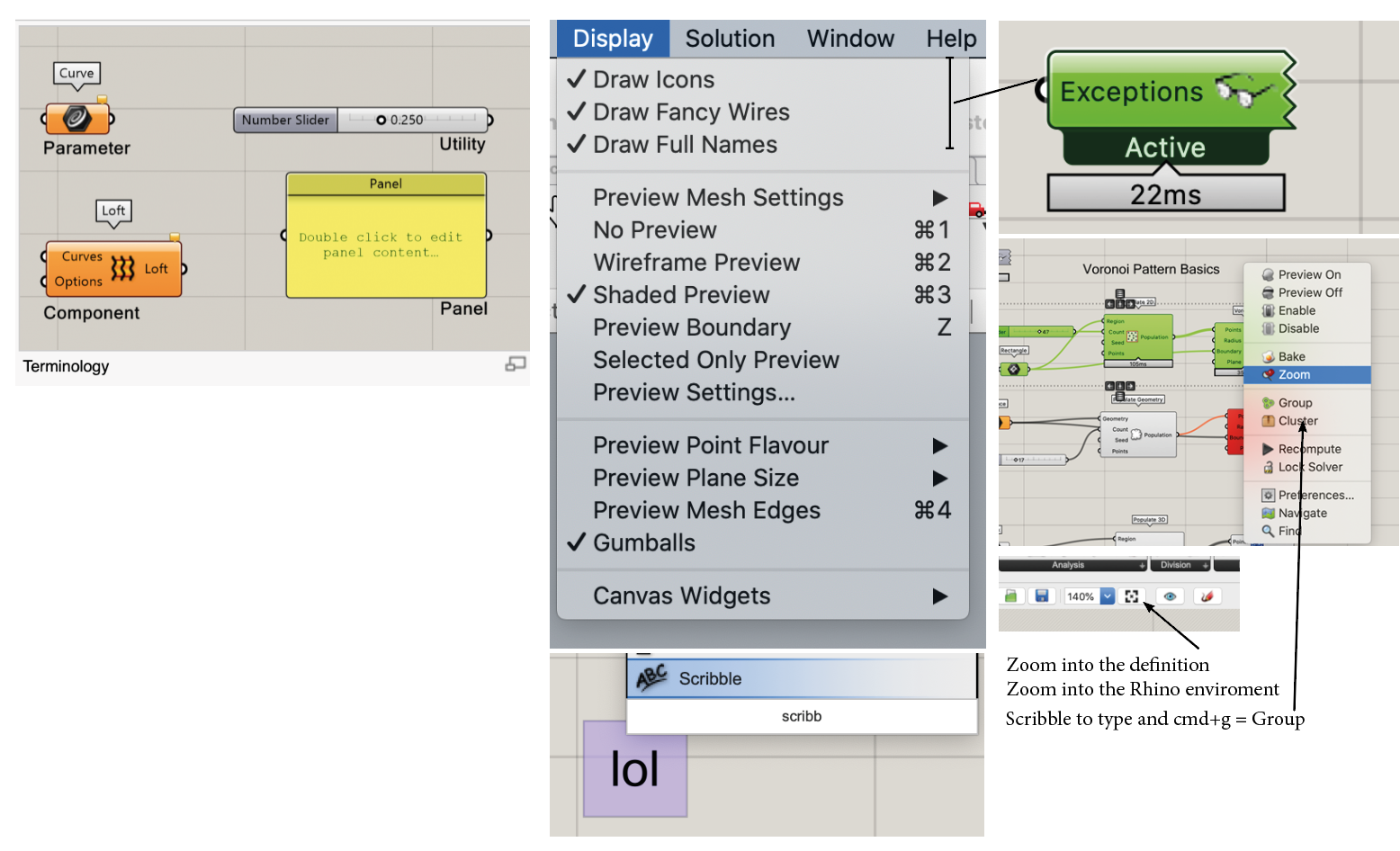
Each Grasshopper definition consists of a network of components connected using connections and with sliders as input. Grasshopper uses the Rhino viewport to display the result of the definition.
1.5.2. What is a Data Tree?
A Data Tree is a hierarchical structure for storing data in nested lists. Data trees are created when a grasshopper component is structured to take in a data set and output multiple sets of data. Grasshopper handles this new data by nesting it in the form of sub-lists. These nested sub-lists work in the same way as folder structures on your computer in that accessing indexed items require moving through paths that are informed by their generation of parent lists and their own sub-index.
.5.2.1. DATA TREE VISUALIZATION The Param Viewer The Param Viewer (Params/Util/Param Viewer) allows you to visualize data in text form and as a tree. Connect any output containing data to the input of the Param Viewer. To show the tree, right-click the Param Viewer and select “draw tree.” In this example, the Param Viewer is connected to the Points (P) output of a Divide Curve component that divided 10 curves into 10 segements each. The ten branches correspond to the ten curves, each containing a list of 11 points which are the division points of the curve.
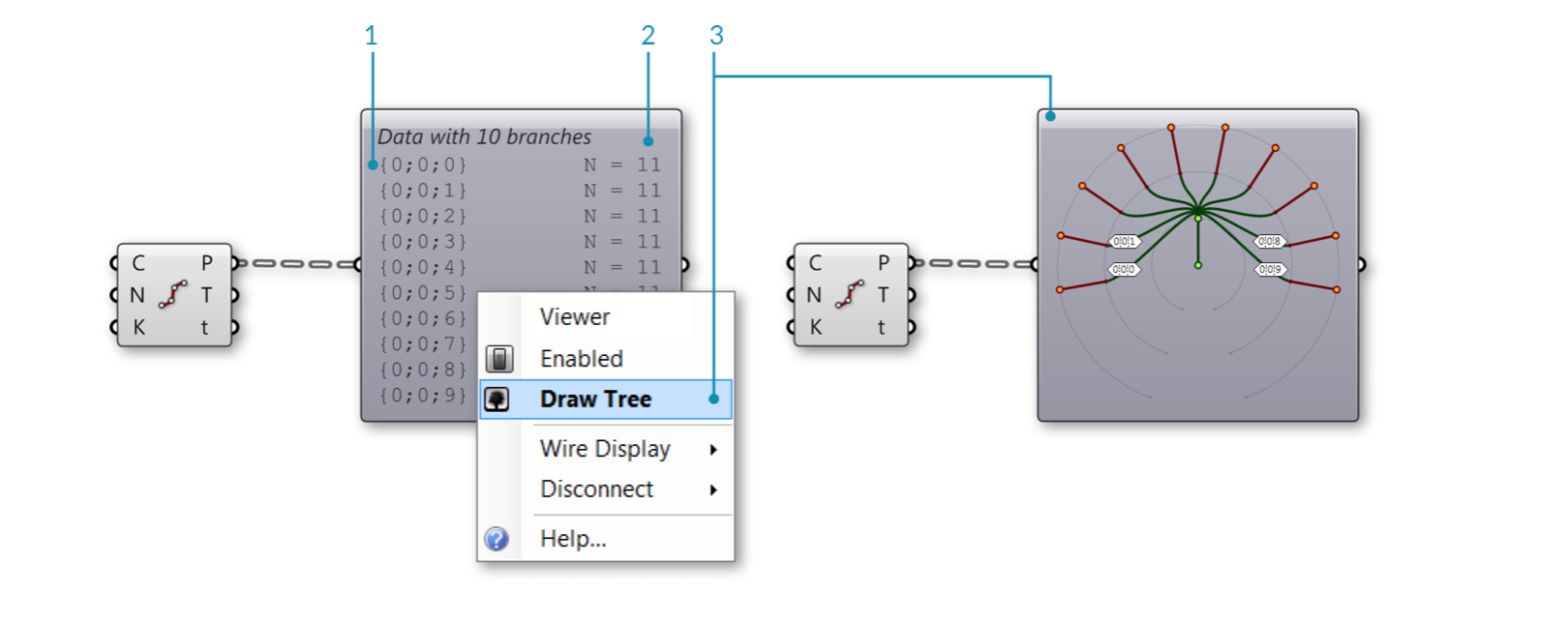
VoronoiPattern¶
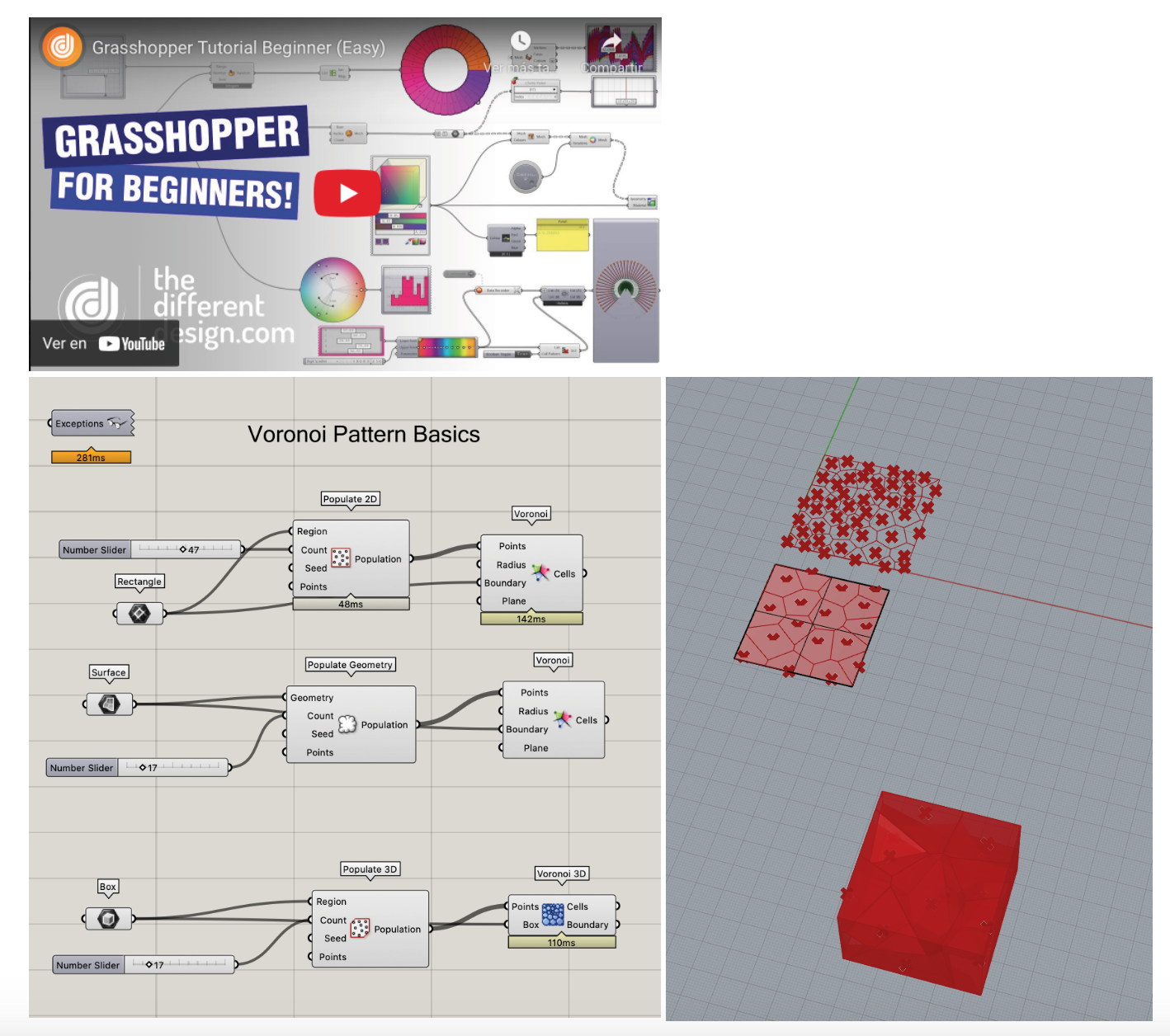
1.3.2. Working with Attractors Attractors are points that act like virtual magnets - either attracting or repelling other objects. In Grasshopper, any geometry referenced from Rhino or created withinGrasshopper can be used as an attractor. Attractors can influence any number of parameters of surrounding objects including scale, rotation, color, and position. These parameters are changed based on their relationship to the attractor geometry.
1.3.2.1. ATTRACTOR DEFINITION
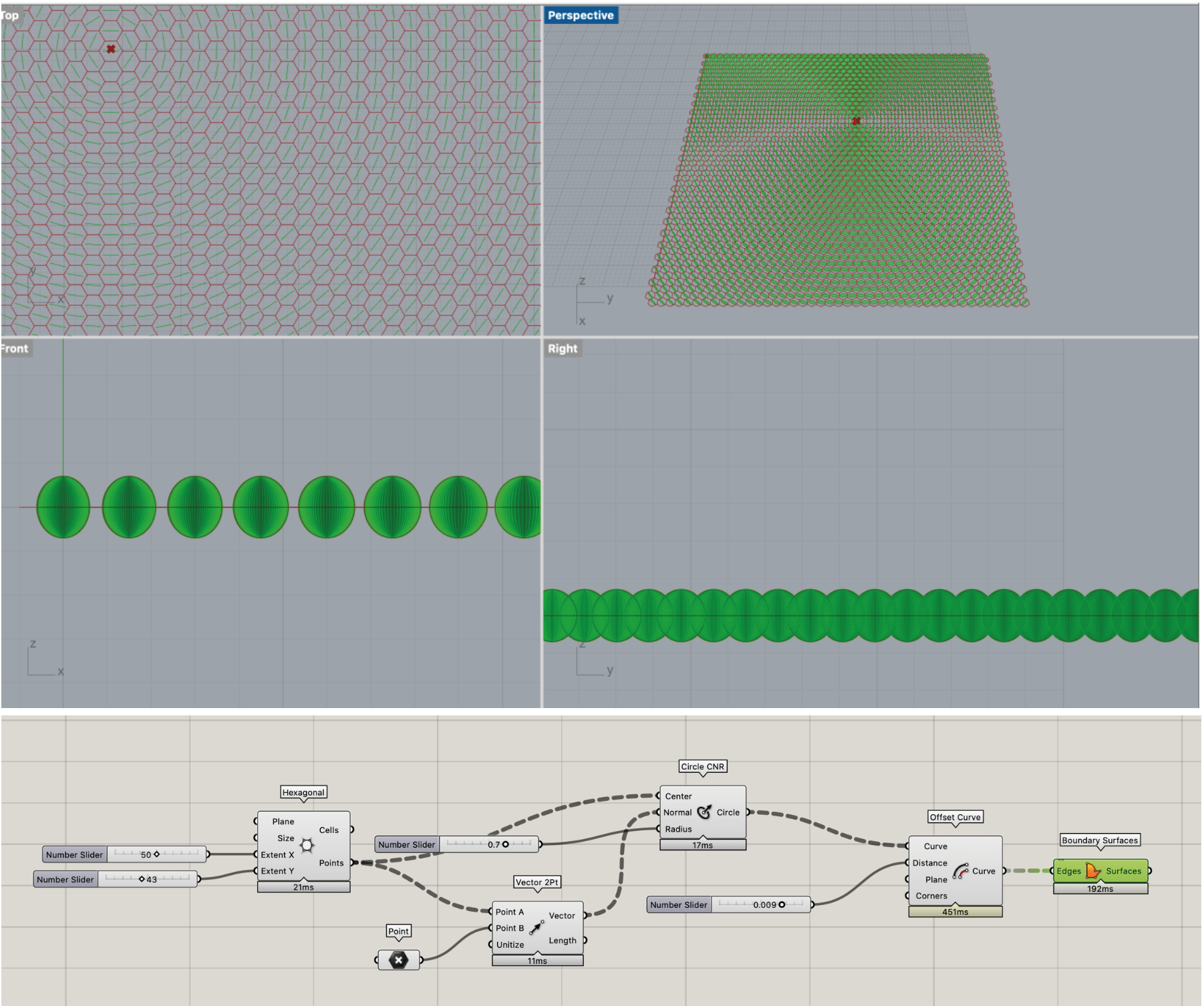 https://modelab.gitbooks.io/grasshopper-primer/content/1-foundations/1-3/2_working-with-attractors.html
https://modelab.gitbooks.io/grasshopper-primer/content/1-foundations/1-3/2_working-with-attractors.html
VoronoiAttractor Basic Definitions¶
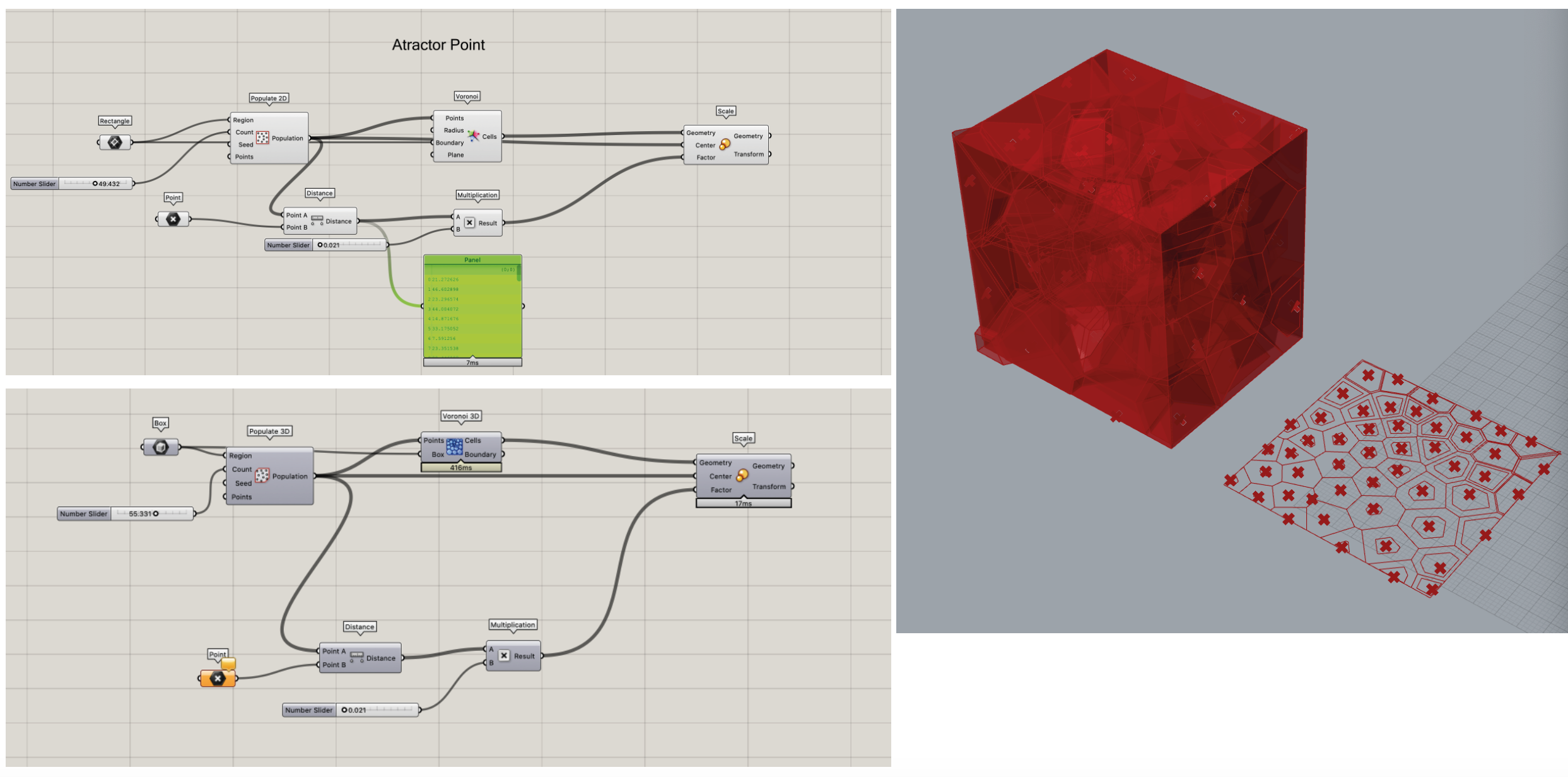
Explanation; an attractor works based on distance (the distance between the set point and the center cells of each voronoi might vary). Distance component (mesure the distance beteween points) panel ( to create a series of number values) that's basically a list telling me how far the set point it´s to each center voronoi point
that the points really close to the attractor point are all going to have really small values and the points much further away are going to have really large values
create a relationship that could scale or change the size of these voronoi cells
FINALDEFINITION
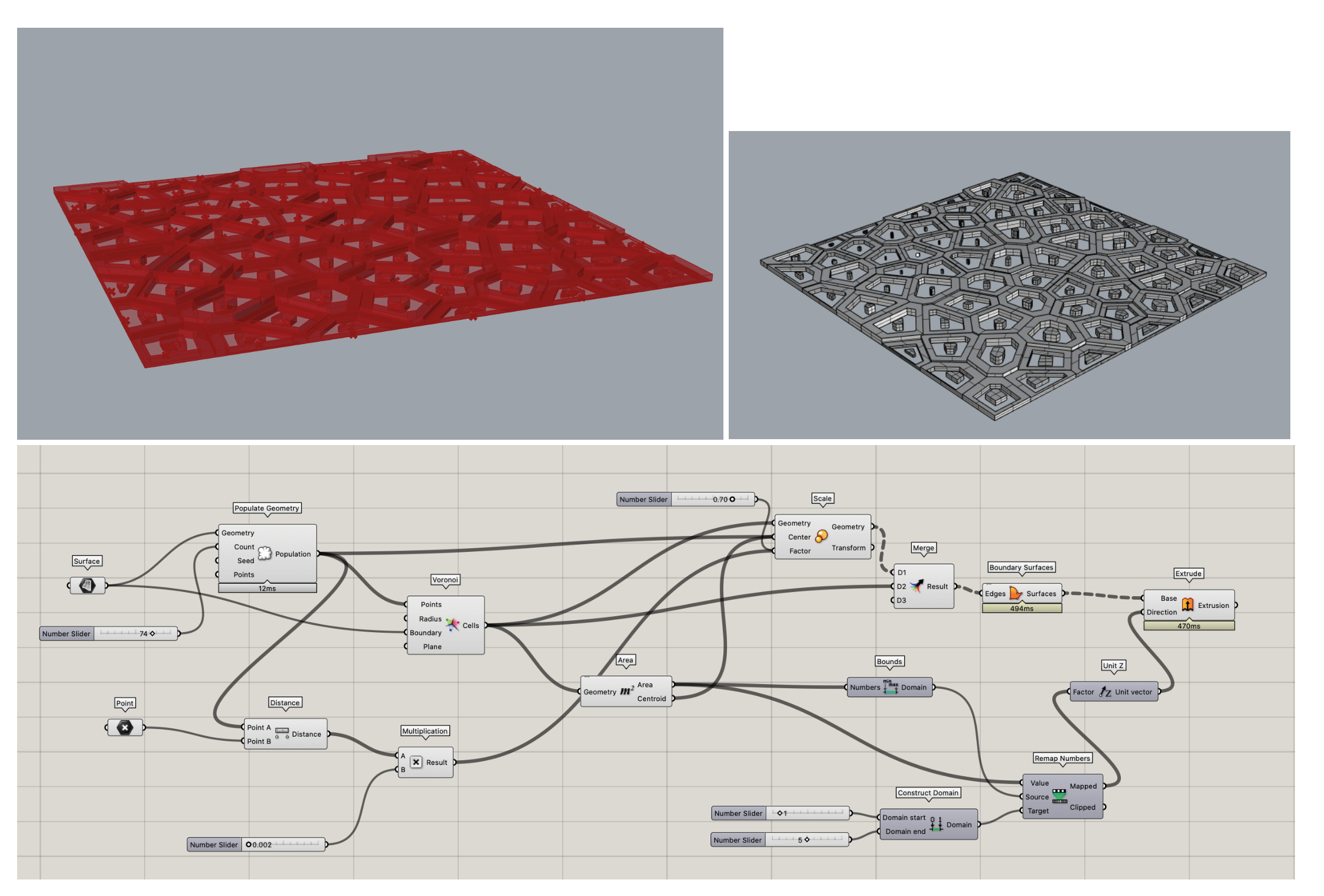
MY PRINT

| Textile | Filament | Colour | Size | Temperature | Printing speed | Printing time | z off | Bed Temperature |
|---|---|---|---|---|---|---|---|---|
| Lycra | PLA (Poly Terra) | White | (200g) | 220°C | 150 mm/sec | 4h 3min | 0.3 mm | 50°C |
PLUG INS
LunchBox is a plug-in for Grasshopper for exploring mathematical shapes, paneling, structures, and workflow. We have also introduced new components for general machine learning implementations such as regression analysis, clustering, and networks. The plug-in includes tools for:
Available components include....
- Data: Components for dataset management, XML, and JSON formats
- Machine Learning: LunchBoxML components for regression, clustering, and neural networks.
- Generate: Components for cool generative geometry.
- Math: Create parametric surfaces and forms such as the Mobius, Klein, or 3D Supershape
- Panels: Create paneling systems such as quad grids, diamonds, or triangles.
- Structure: Create wire structures such as diagrids or space trusses.
- Utility: Geometry utiltiies, sorters, R-tree searches
- Workflow: Read and write Excel files, layer management, and automate baking and saving.
weaverbird https://www.giuliopiacentino.com/weaverbird/
Weaverbird is a topological modeler that contains many of the known subdivision and transformation operators, readily usable by designers. Instead of doing the work repeatedly, or sometimes using complicated scripts, this plug-in reconstructs the shape, subdivides any mesh, even made by polylines, and helps preparing for fabrication.
Meshedit It is a set of components which extend Grasshopper's ability to work with meshes.
utilities:
Mesh from points Mesh cull unused vertices Mesh flip Mesh unify normals Mesh weld vertices with threshold
noise4d
This add-on forms smooth 4D Perlin noise and Simlex noise, two very well-known smooth noise functions investigated by Ken Perlin. Inputs are: - a point pt: the location to sample - a number (double) t: the "location" in time - a scale (number): a multiplier to change the scale of the values passed by pt and t.
human Extends Grasshopper's ability to create and reference geometry including lights, blocks, and text objects. Also enables access to information about the active Rhino document, pertaining to materials, layers, linetypes, and other settings.
Bowerbird It is a plugin for Rhino and Grasshopper providing some tools for modeling.
Voronoi Extrusion¶
https://youtu.be/qt8R4CNx4tw
WEB REFERENCES¶
http://wiki.bk.tudelft.nl/toi-pedia/Getting_Started_with_Grasshopper
https://modelab.gitbooks.io/grasshopper-primer/content/1-foundations/1-5/2_what-is-a-data-tree.html
FROM LAS YEAR¶
